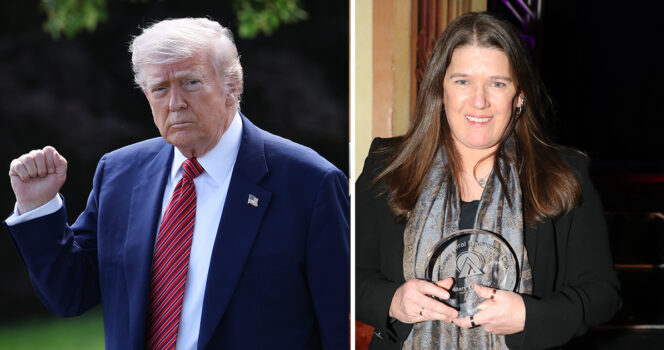In today’s digital era, news travels faster than ever before. A single social media post, a photo, or even a comment can reach millions of people across the world within moments. This unprecedented speed of communication has changed the way we learn, react, and form opinions. However, it has also opened the door to one of the most challenging issues of our time — the viral spread of unverified information.
The rise of smartphones, 24-hour news cycles, and global connectivity has made it easier than ever to stay informed. Yet, this convenience comes at a cost. False stories, rumors, and half-truths can spread with the same — or even greater — speed as genuine information. In this environment, understanding how misinformation travels and learning to distinguish fact from fiction has become an essential digital skill.
This article explores how rumors gain traction online, why people are drawn to share them, the role of technology in amplifying them, and how we can collectively promote a culture that values truth over virality.
The Evolution of News in a Hyperconnected World
A few decades ago, news came from a handful of trusted sources — newspapers, radio broadcasts, and television programs. Verification was slow but thorough. Editors, journalists, and fact-checkers worked behind the scenes to confirm every detail before publishing.
Today, the situation is dramatically different. The moment something happens anywhere in the world, someone is likely to record it and post it online instantly. Within minutes, that post can appear on thousands of feeds, often before any official statement or verification occurs. This real-time sharing creates both opportunities and challenges.
On one hand, it enables rapid dissemination of critical information — for instance, updates during emergencies, natural disasters, or public health alerts. On the other, it also allows misinformation to flourish, especially when people share content out of fear, curiosity, or emotion rather than accuracy.
In a society driven by clicks, engagement, and visibility, the line between truth and speculation can blur quickly.
Why Unverified News Spreads So Easily
Not every story goes viral, and not every post attracts attention. Yet, certain types of content have a higher chance of spreading rapidly. To understand why, we need to look at what makes some information more “shareable” than others.
1. Stories About Famous or Influential People
Rumors involving celebrities, politicians, or public figures tend to gain massive attention. Human curiosity naturally gravitates toward those who live in the public eye. People often feel emotionally invested in these figures and are quick to react to any news — verified or not.
2. Sudden and Unexpected Events
Surprising developments — accidents, scandals, or mysterious occurrences — often trigger a strong emotional response. When information is scarce, speculation fills the gap, and social media users become part of the conversation, amplifying the uncertainty.
3. Emotional Appeal
Psychologists have long recognized that emotion drives behavior. Posts that trigger feelings of fear, anger, or empathy are more likely to be shared. Even if the content is later proven false, the emotional impact lingers, making it memorable and influential.
4. Ambiguity and Lack of Clarity
When facts are missing or incomplete, people attempt to make sense of the situation themselves. They share information hoping to help or stay informed, but in doing so, they sometimes spread unverified content.
5. The Desire to Be First
In the digital landscape, being the first to share a breaking story provides a sense of importance and validation. Unfortunately, this rush to post often bypasses the crucial step of verifying facts.
When combined, these factors create the perfect environment for rumors to take root and multiply.
The Role of Social Media Platforms
Social media has transformed the way information flows. Platforms such as X (formerly Twitter), Facebook, Instagram, and TikTok allow anyone to publish and distribute content instantly. This democratization of communication is powerful — but it also means that accuracy is no longer guaranteed.
Algorithmic Amplification
Social media algorithms are designed to promote content that generates engagement. The more likes, comments, and shares a post receives, the more visible it becomes. Unfortunately, sensational stories — regardless of their truth — tend to attract more attention. This means that emotionally charged misinformation often spreads faster than well-researched journalism.
Echo Chambers and Filter Bubbles
Algorithms also personalize content to match users’ interests and beliefs. Over time, this creates “echo chambers,” where people primarily see opinions and information that reinforce their existing worldview. Within these environments, rumors can thrive unchecked, because users are less likely to encounter corrections or differing perspectives.
The Speed of Virality
The velocity of social media communication leaves little room for reflection. By the time authorities issue clarifications or journalists verify the details, misinformation may have already reached millions. The speed of rumor propagation often outpaces the speed of truth.
The Psychology Behind Why We Believe and Share Rumors
Understanding human psychology is essential to understanding why rumors spread. The process is not driven by malice but by fundamental cognitive and emotional tendencies.
Availability Heuristic
Our brains estimate how likely something is to be true based on how easily we can recall similar examples. Dramatic stories come to mind quickly, making them feel more believable — even if they are unverified.
Fear and Anxiety
People often share alarming information as a way of protecting others. During crises, rumors can spread as an instinctive reaction to uncertainty and fear.
Social Proof
When we see many people sharing or commenting on a post, we assume it must be true. This phenomenon, known as social proof, reinforces viral misinformation.
Curiosity and Novelty
Humans are wired to seek new and surprising information. The more unusual a claim appears, the more likely it is to capture our attention and be passed along.
In essence, rumors exploit human instincts that evolved for survival — the urge to warn others, connect socially, and make sense of uncertain situations.
Real-World Effects of Online Rumors
While rumors may seem harmless online, their consequences can extend far beyond digital spaces. The damage caused by misinformation can be social, psychological, economic, or even political.
1. Public Panic
False claims about emergencies — such as natural disasters, security threats, or health scares — can lead to unnecessary fear and disruption. In extreme cases, misinformation can strain emergency services or cause real harm.
2. Damage to Reputations
When false allegations target individuals or organizations, the effects can be long-lasting. Even after corrections are issued, negative impressions often linger in the public mind.
3. Economic Consequences
Misinformation about companies, markets, or industries can affect stock prices and consumer trust. In the digital age, one viral rumor can impact entire economies.
4. Policy and Governance Challenges
Governments may face pressure to respond to online rumors, diverting attention and resources from verified issues. In some cases, false information can influence public policy or political decisions.
5. Erosion of Trust
When people repeatedly encounter unverified or false stories, they begin to doubt not only the media but also institutions, experts, and one another. This erosion of trust weakens the foundation of informed democracy.
The Importance of Verification in Modern Journalism
Responsible journalism remains one of the strongest defenses against misinformation. Professional reporters and editors follow established verification processes before publishing any story. These include:
- Cross-checking multiple sources: Reliable information rarely comes from a single source. Journalists confirm details by consulting different credible outlets.
- Seeking official statements: When relevant, input from authorities, experts, or institutions ensures accuracy.
- Verifying media authenticity: Images, videos, and eyewitness accounts must be analyzed carefully to confirm their origin and context.
- Transparency in reporting: Ethical journalism distinguishes clearly between verified facts, opinions, and developing stories.
For everyday readers, practicing information literacy — the ability to assess credibility and spot manipulation — is just as essential. Taking time to pause and verify before sharing helps slow the spread of misinformation and promotes a healthier information environment.
Case Study: Viral Rumors Involving Public Figures
One of the most common examples of unverified information going viral involves public figures. A single ambiguous post, photograph, or unconfirmed report can ignite global speculation within hours. Fans, critics, and media outlets often rush to react before facts are verified.
This pattern illustrates how emotional connection and curiosity can override caution. Experts advise using the “pause before share” principle — waiting for reputable confirmation before engaging. The delay may seem insignificant, but it can prevent the unnecessary spread of misleading narratives.
How Technology Companies Are Responding
Social media platforms and tech companies are increasingly aware of their role in curbing misinformation. Many have introduced tools and partnerships to promote accuracy:
- Fact-Checking Collaborations: Partnering with independent organizations to review and label content that may be false or misleading.
- Warning Labels: Posts containing unverified claims may include visual alerts encouraging users to verify information before sharing.
- Algorithmic Adjustments: Giving priority to credible news outlets and verified updates rather than sensational, engagement-driven posts.
- Educational Initiatives: Promoting media literacy campaigns to help users identify misleading information.
While these measures are not perfect, they represent progress toward greater accountability and awareness within the digital ecosystem.
Building a Culture of Critical Thinking
Technology alone cannot solve the problem of misinformation. Each individual plays a role in shaping the integrity of online discourse. By cultivating critical thinking and responsible sharing habits, we can collectively reduce the influence of false narratives.
Practical Steps for Every User
- Verify Before Sharing: Check multiple reputable sources before reposting any claim.
- Avoid Sensationalism: Be skeptical of headlines designed to provoke strong emotion or outrage.
- Consider Context: A single clip or image may not represent the full story.
- Be Aware of Emotional Bias: Recognize when feelings like fear or anger may affect judgment.
- Support Reliable Journalism: Engage with media outlets that prioritize accuracy, transparency, and accountability.
These habits encourage a culture of informed responsibility, where truth holds greater value than speed or drama.
Education and Media Literacy: The Long-Term Solution
Developing media literacy is one of the most powerful tools for combating misinformation. Schools, communities, and organizations can help individuals learn to evaluate sources, question assumptions, and understand how digital platforms shape perception.
A well-informed public is less susceptible to manipulation. Encouraging curiosity, skepticism, and open dialogue helps ensure that people think critically rather than react impulsively.
Media literacy education also fosters empathy. When individuals understand how misinformation can harm others, they become more careful about what they share.
The Broader Social and Global Impact
The effects of misinformation extend beyond individuals or communities — they influence societies at large. Viral rumors can:
- Affect diplomatic relations when false claims circulate internationally.
- Shape public opinion during elections.
- Influence consumer behavior and market confidence.
- Undermine social unity by deepening divisions and mistrust.
In this context, the spread of misinformation is not merely a digital inconvenience — it is a global challenge that requires awareness, cooperation, and ongoing education.
Looking Ahead: Technology and the Future of Truth
As artificial intelligence and automation evolve, new challenges and opportunities arise in the fight against misinformation. Tools capable of detecting manipulated images, deepfakes, and synthetic voices are being developed, but so are technologies that make deception more convincing.
This dynamic underscores a central truth: technology can assist in maintaining accuracy, but human judgment remains irreplaceable. The responsibility to question, verify, and think critically will always lie with people.
A future defined by digital truth depends on shared values — transparency, accountability, and a collective commitment to the facts.
Conclusion: Protecting Truth in an Age of Speed
The modern information landscape moves faster than verification, creating both wonder and risk. While the ability to share instantly connects the world, it also demands greater responsibility from everyone who participates.
Rumors spread because they appeal to our natural instincts — curiosity, empathy, and fear — but unchecked sharing can erode trust, harm reputations, and distort reality. Understanding the mechanisms behind virality helps us resist these tendencies.
In the end, truth still matters. Accuracy is not an obstacle to progress; it is the foundation of meaningful communication and collective trust. By learning to pause before sharing, verifying sources, and supporting credible journalism, we each contribute to a more reliable, thoughtful, and informed digital world.
The lesson is timeless and simple: speed should never outweigh accuracy. In an era where information travels at the speed of light, truth remains our most valuable guide. Every click, share, and post carries the power to shape perceptions — and with that power comes the responsibility to ensure that what we amplify is real, not rumor.




